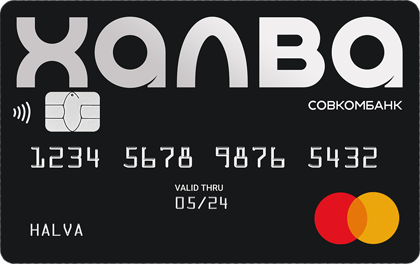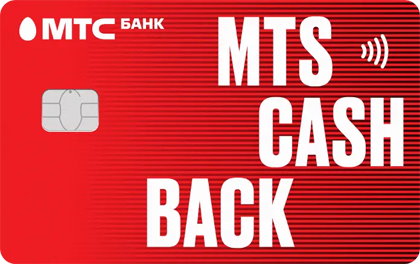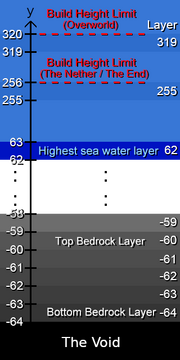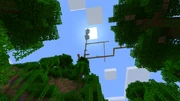Несмотря на то, что Minecraft является такой популярной игрой, она известна тем, что не объясняет игроку свою механику, предоставляя каждому исследовать самому. Именно поэтому существует множество учебников по горному делу или геологоразведке. Часто в таких руководствах рассказывают о высоте или высоте, поэтому сегодня мы объясним, как работают слои в Minecraft и как узнать, на каком слое вы находитесь.
Высота
Прежде чем вы узнаете о высоте, вам нужно познакомиться с понятием координат. Игра постоянно отслеживает, где вы находитесь. Каждый блок в игре имеет координаты, и ваши координаты будут соответствовать блоку, на котором вы стоите. Посмотрев на координаты, вы узнаете, где вы находитесь, потому что эти цифры показывают, как далеко вы находитесь от «центра» Minecraft.
Координата «X» указывает на ваше положение на востоке или западе. Каждый блок, перемещаемый на восток, добавляет положительное число, а каждый блок на запад — отрицательное. Координата «Z» работает аналогичным образом, но указывает вашу позицию на север (положительное значение) или на юг (отрицательное значение). Позиция 0,0 — это начало координат, или точка начала игры.
Координата «Y» — это та, которая нас интересует сегодня, потому что она измеряет высоту игрока. В отличие от координат «X» и «Z», эта координата не имеет отрицательных чисел, потому что вы не можете опуститься ниже точки 0 без обмана.
Координата «Y» говорит нам, как высоко мы находимся или как глубоко. Когда мы входим в пещеру и спускаемся на дно, наш рост обычно составляет около 20 или 30. На вершине он составляет около 100. Самая низкая точка в мире — 0, а самая высокая — 255.
Как узнать на каком слое я нахожусь в игре Minecraft.
Чтобы узнать, на каком слое вы находитесь, нужно просто знать свой рост. Слой 15 — высота 15, слой 30 — высота 30 и так далее. В Java Edition (версия для ПК) вы можете увидеть высоту вместе с другими координатами в формате меню отладки. Чтобы увидеть это меню, просто нажмите клавишу «F3».
В редакции Windows 10 и других платформах можно активировать опцию просмотра своих координат в меню параметров мира. Если эта опция включена, вы можете видеть свои координаты, включая высоту, в верхнем левом углу.
Для чего используется высота. — Другие способы вычисления высоты
Высота — очень важное понятие при изучении руководства по Minecraft. Некоторые учебники объясняют концепции добычи и разведки, обсуждая слои и высоту. Здесь мы оставляем несколько примеров высот, которые очень полезны и могут помочь вам вычислить высоту, если вы не можете воспользоваться приведенными выше советами. Эта информация взята из энциклопедии Minecraft.
В Minecraft дно мира, самая низкая точка, куда вы можете попасть, известна как Bedrock или «Материнская скала», это блок, который нельзя сломать без читов. Этот блок покрывает весь фон мира и не позволяет вам опуститься ниже слоя 0.
Облака находятся между слоем 100 и 150.
А Minecraft позволяет вам делать так много вещей, что вы даже можете построить дом в воздухе на этой высоте.
Углерод образуется от слоя 1 до 119 (в основном 5-56), вода образуется от слоя 1 до 111 (чаще встречается на уровне моря), море находится на уровне 63, морское дно более или менее находится на уровне 45, железо образуется от слоя 1 до 63 (в основном 2-58). Это особенно важно, потому что из железа получаются хорошие инструменты и другие очень полезные предметы.
- Золото генерируется с 1 по 31 слой (чаще всего 4-28)
- Изумруд генерируется с 4 по 31 слой (чаще всего 5-29)
- Алмаз и красный камень генерируются с 1 по 15 слой (чаще всего 4-13)
- Ниже 10 слоя лежат океаны лавы
- Каменное дно находится в последних 4 слоях.
Туториалы по Minecraft очень полезны для улучшения игры, вы можете научиться делать зелья и другие удивительные вещи. Но мы всегда приглашаем вас открыть для себя самое главное самостоятельно. Помните, что обучение — это часть приключения!
Наверх
Для того что бы узнать высоту в Майнкрафт на компьютере или ноутбуке, нужно нажать клавишу F3 и найти строку XYZ. В ней вам нужно найти среднюю координату Y которая и является высотой в игре.
Что бы лучше понять куда именно смотреть, взгляните на скриншот. Нужно учитывать только цифры до точки, то есть текущие координаты персонажа на скриншоте 240/63/-9 и высота составляет 63.
От высоты на которой вы находитесь зависит очень многое, особенно если вы занимаетесь добычей руды и минералов. Так например зная высоту можно:
- найти залежи определенных ресурсов (алмазов, изумрудов, золота и т.д.);
- встретить определенных мобов (например слизней);
- узнать сколько блоков осталось до слоя Bedrock;
- посчитать сколько блоков до поверхности (может пригодится при строительстве бункера) и т.д.
Как посмотреть высоту на телефоне
Для того что бы узнать свои координаты (в том числе высоту) в Майнкрафт на телефоне нужно в чат ввести команду:
/tp ~ ~ ~
После активации команды, слева на экране у Вас появятся ваши текущие координаты, из которых можно узнать высоту на которой вы находитесь. В данном случае высота составляет 70.
Важно! Что бы команда сработала, необходимо включить читы в игре.
Как посмотреть высоту в Майнкрафте?
Если же пользователь желает узнать то, где он оказался во вселенной Minecraft и на какой высоте находится прямо сейчас, то разработчик добавил для этого весьма полезные инструменты. Речь идет о координатах. Используя их, удастся понять точное местоположение игрока и понимание того, насколько высоко он смог забраться. Все, что для этого нужно, так это понимать, как определить координаты. Это и будет рассказано прямо сейчас.
Как посмотреть высоту в игре minecraft
Первый способ просмотра координат предназначен для компьютера. Какие действия для этого должны быть выполнены:
- Пользователю предстоит открыть экран с отладкой полностью. В новых версиях игры по умолчанию соответствующий пункт открывается лишь частично. Для его открытия полностью, понадобится использовать меню настроек.
- Далее нужно нажать на клавишу, которая открывает экран отладки. Для этого понадобится обратить внимание на клавишу F3, присутствующую на клавиатуре.
- Теперь на экране нужно увидеть координаты. Там можно обнаружить огромное количество данных! Найти нужные удастся максимально просто. Достаточно обратить внимание на строку XYZ.
- В этой строке X отвечает за то, где расположен персонаж, касательно востока или запада. Y — расположение на уровень выше или ниже стартового блока, иначе говоря высота. Z — расположение к северу или югу от начального блока на земле.
- Далее нужно перемещаться и начать следить за тем, как изменяются эти значения.
На консольных версиях инструкция слегка меняется.
Понадобится лишь использовать этот способ:
- Понадобится открыть карту. На консольной версии Minecraft для этого нужно перейти в инвентарь и ознакомиться с соответствующим разделом.
- Обнаружить координаты в самом вверху.
- Сохранить их или расшифровать, в зависимости от того, что конкретно с ними планируется делать.
Вне зависимости от того, какие конкретно действия были выполнены или какая платформа используется для игры, пользователь может наслаждаться результатом в виде полученных координат. Поэтому такой процесс стоит запомнить и начать использовать его при появлении соответствующей необходимости в Minecraft.
This article needs to be updated.
Please update this page to reflect recent updates or newly available information.
Reason: The rarity of blocks in the Overworld in 1.18 has changed.
Chart lining up Y-coordinate values (left) to block layers (right) (not to scale).
Altitude is a measurement of vertical distance, or distance along the Y-axis.
Definition
Altitude is defined as «the height of anything above a given planetary reference plane, especially above sea level on earth.«[1]
In Minecraft, altitude is often expressed as the bottom face of a block layer, where the lowest block that can be placed is at layer -64 and has a Y-coordinate of −64. For instance, sea level is at layer 62, while clouds appear at layer 191).
This is not to be confused with altitude when otherwise expressed as the top face of a block layer, where the lowest block that can be placed is at layer -63 and has a Y-coordinate of -63. For example, sea level is at layer 63, while clouds appear at layer 192. This is akin to calling the ground level story the «first floor» (top face of a block layer), rather than the «ground floor» (bottom face of a block layer). The player can press F3 to see the Y-coordinate of the top face of a block they are on top of.
Altitude expressed as the bottom face of a block layer is most useful for identifying the position of blocks, such as when using /fill to replace block(s). Expressing altitude as the top face of a block layer is more useful for identifying the position of entities, such as when using /tp to teleport or /summon to spawn an entity/entities. For instance, the topmost block of water in an ocean biome has a Y-coordinate of 62; in a frozen ocean biome, ice replaces water at sea level, and the lowest height where terrestrial mobs will spawn is at layer 63.
Features and effects by height
| Y-coordinate | Feature or effect |
|---|---|
| 21024/Approximately 1.8 × 10308, or 180 uncentillion | Largest height Minecraft can distinguish from infinity, Java’s Double.MAX_VALUE.[2]
|
| 36,028,797,018,963,968 | Above this height, players cannot move vertically except using NBT editors. |
| 4,503,599,627,370,496 | Maximum height reachable by flying, the point where the Double datatype stops growing in steps of 0.5.
|
| 2,147,483,647 | In Bedrock Edition, the game crashes beyond this point. |
| 30,000,000 | The maximum height the player can teleport to. |
| 2,032 | Top face of the highest block that can be placed in a Custom world generated with the maximum build height. |
| 320 | Top face of the highest block that can be placed in the Overworld. |
| Highest layer where coal ore can generate, replacing stone, granite, diorite and andesite. | |
| 256 | Naturally-generated terrain appears to be capped at this height, excepting Amplified worlds. |
| Top face of the highest block that can be placed in the Nether[Java Edition only] and the End. | |
| 255 | Highest layer where dirt and gravel can generate, replacing stone, granite, diorite and andesite.[3] |
| 191–195 | Range of cloud layers. |
| 127 | Full bedrock layer in the Nether. |
| Highest layer where nether quartz ore, nether gold ore and ancient debris can generate, replacing netherrack, basalt, and blackstone.[3] | |
| In Bedrock Edition, this is the bottom face of the highest block that can be placed in the Nether. | |
| 123–126 | Range of partial bedrock layers in the Nether. |
| 79 | Highest layer where gold ore within badlands biomes, granite, diorite and andesite can generate, replacing stone, granite, diorite and andesite.[3] |
| 75 | All 20 end gateways on the main End island generate at this height. |
| 50–70 | Range of layers where slimes are able to spawn in swamps. |
| 63 | Highest layer where infested stone within mountains biomes, iron ore, and lapis lazuli ore can generate, replacing stone, granite, diorite and andesite.[3] |
| 62 | Sea level. |
| Phantoms only spawn if players are above this level. | |
| 40 | Highest layer where slimes are able to spawn within «slime chunks» outside of swamps. |
| 36 | Highest layer where gravel and blackstone can generate, replacing netherrack, basalt, and blackstone.[3] |
| 31 | Highest layer where gold ore outside of badlands biomes can generate, replacing stone, granite, diorite and andesite; lowest layer where emerald ore within mountains biomes can generate[3] |
| lava sea level in the Nether. | |
| 15 | Highest layer where redstone ore and diamond ore can generate, replacing stone, granite, diorite and andesite.[3] |
| 1-7 | Partial layers of deepslate in the Overworld in Java Edition. |
| 1–4 | Partial layers of bedrock in the Nether. |
| 0 | Full bedrock layer in the Nether. |
| Deepslate replaces stone below this layer in Java Edition. | |
| Some aquifers below this layer can be filled with lava instead of water. | |
| 0 to -7 | Partial layers of deepslate in the Overworld in Bedrock Edition. |
| -8 | Deepslate replaces stone below this layer in Bedrock Edition. |
| -51 | The floor of ancient cities always generates at this layer. |
| −54 | Lava replaces air below this layer. |
| −59 to −63 | Partial layers of bedrock in the Overworld. |
| −64 | Full layer of bedrock in the Overworld. |
| Bottom face of the lowest block that can be placed. | |
| −104 | An invisible border prevents players from falling in Bedrock Edition. |
| −128 | Players below this height take void damage in Java Edition. This damage cannot be prevented or mitigated, but commands can provide enough Regeneration to survive it. Non-player entities falling below this height despawn instantly. |
| −2,032 | Bottom face of the lowest block that can be generated in a Custom world with the maximum build height. |
| −65,536 | Upper limit of the bottom face of the lowest temporary (isn’t saved) block that can be placed in a Custom world (the lower it is, the slower the game runs). However, it can only be accessed through external programs. |
| −16,777,216 | In Bedrock Edition, the player cannot fly below this layer. Every second block is invalid; because players are 2 blocks tall, it is impossible to enter. If bypassed via commands, the player experiences extreme jitter and camera movement. |
| −30,000,000 | The minimum height the player can teleport to. |
Natural resources and altitude
This section needs to be updated.
Please update this section to reflect recent updates or newly available information.
Reason: 1.18 has changed the block distribution in the Overworld.
Features in the landscape of the Overworld are found at different altitudes, as shown in the graph below.
Note that these charts utilize the logarithmic scale, which means a slight difference in the Y-coordinate represents a large change in the relative frequency of a block type.
Some observations:
- Looking at water, the amount at layer 62 (sea level) is obvious. Moving down, the amount quickly decreases at layers 56 and 48, the usual depth of river and ocean biomes respectively.
- There are corresponding peaks in the amount of clay beneath them.
- Between layers 33 and 12, most water is falling down sub-ocean ravines, spreading out on the lava-filled bottom at layer 10 and producing most of the naturally-occurring obsidian.
- Ores and gravel (not shown) usually occur as a fixed percentage of the amount of stone (also not shown), tapering off at the ends of their allowed generation range.
- This is why coal and iron follow parallel tracks between layers 5 and 60.
- The one exception is lapis lazuli ore, which has a linear progression up to a peak at Y = 15.
The following table offers a more in-depth summary of the same block distribution as shown in the graph above.
| Landscape feature | Number of blocks | Complete layer range | Most common layers[note 1] |
|---|---|---|---|
| Air | 9,695,541,021 | 4–255 | 106–216 |
| Stone | 2,005,619,824 | 1–132 | 12–49 |
| Water | 489,396,205 | 2–124 | 41–60 |
| Bedrock | 153,795,905 | 0–4 | 0–3 |
| Andesite | 123,405,229 | 1–80 | 13–47 |
| Diorite | 118,804,737 | 1–81 | 12–48 |
| Granite | 114,088,233 | 1–80 | 13–48 |
| Dirt | 106,908,460 | 1–131 | 30–73 |
| Cave Air | 96,917,830 | 2–117 | 17–46 |
| Gravel | 53,206,507 | 1–129 | 19–51 |
| Coal Ore | 32,570,378 | 1–127 | 12–48 |
| Grass Block | 20,188,180 | 6–131 | 62–77 |
| Iron Ore | 18,880,016 | 1–63 | 12–44 |
| Lava | 17,869,007 | 2–106 | 2–13 |
| Sand | 16,938,294 | 8–93 | 48–66 |
| Kelp Plant | 7,686,309 | 11–61 | 38–53 |
| Oak Leaves | 7,637,712 | 29–126 | 67–82 |
| Sandstone | 5,907,831 | 43–90 | 55–65 |
| Redstone Ore | 5,873,349 | 1–15 | 5–12 |
| Snow | 5,407,768 | 22–133 | 61–82 |
| Birch Leaves | 4,329,143 | 32–108 | 68–81 |
| Tall Seagrass | 3,661,703 | 11–67 | 33–49 |
| Spruce Leaves | 2,316,379 | 63–132 | 67–82 |
| Gold Ore | 2,074,791 | 1–31 | 8–24 |
| Seagrass | 2,041,853 | 11–70 | 33–54 |
| Dark Oak Leaves | 1,629,042 | 66–93 | 70–78 |
| Grass | 1,537,211 | 32–130 | 63–74 |
| Kelp | 1,421,849 | 12–62 | 40–56 |
| Ice | 839,291 | 43–95 | 61–63 |
| Lapis Ore | 838,155 | 1–30 | 8–20 |
| Packed Ice | 829,420 | 35–139 | 56–75 |
| Oak Planks | 772,373 | 3–76 | 20–39 |
| Bubble Column | 765,952 | 11–62 | 11–40 |
| Diamond Ore | 715,733 | 1–15 | 5–12 |
| Obsidian | 671,686 | 4–77 | 7–13 |
| Oak Log | 653,095 | 38–125 | 66–81 |
| Dark Oak Log | 629,481 | 28–91 | 67–76 |
| Oak Fence | 512,104 | 3–72 | 19–38 |
| Birch Log | 508,969 | 29–107 | 66–80 |
| Infested Stone | 310,624 | 1–63 | 15–50 |
| Vine | 299,559 | 62–112 | 63–74 |
| Spruce Log | 283,922 | 31–130 | 66–81 |
| Clay | 256,360 | 12–78 | 54–62 |
| Snow Block | 190,865 | 62–109 | 63–76 |
| Rail | 185,200 | 3–49 | 19–37 |
| Cobblestone | 169,242 | 2–101 | 17–52 |
| Cobweb | 169,142 | 5–95 | 20–39 |
| Magma Block | 153,900 | 10–77 | 10–19 |
| Acacia Leaves | 140,712 | 64–103 | 68–84 |
| Tall Grass | 133,068 | 11–97 | 62–74 |
| Stone Bricks | 77,924 | 9–77 | 19–40 |
| Netherrack | 72,388 | 10–78 | 32–60 |
| Mossy Cobblestone | 67,721 | 2–80 | 16–46 |
| Red Mushroom Block | 65,350 | 64–87 | 67–76 |
| Poppy | 55,740 | 11–120 | 62–78 |
| Mossy Stone Bricks | 52,848 | 9–72 | 21–43 |
| Large Fern | 42,075 | 11–95 | 64–77 |
| Jungle Leaves | 39,616 | 64–112 | 72–90 |
| Dirt Path | 38,001 | 55–91 | 61–76 |
| Dandelion | 35,139 | 11–127 | 61–77 |
| Spruce Planks | 34,388 | 26–94 | 45–72 |
| Emerald Ore | 32,420 | 4–31 | 9–25 |
| Cracked Stone Bricks | 31,817 | 9–80 | 20–42 |
| Lily Pad | 27,893 | 62–69 | 63 |
| Fern | 25,667 | 61–95 | 64–75 |
| Brown Mushroom Block | 18,309 | 67–85 | 69–77 |
| Acacia Log | 16,653 | 63–102 | 65–83 |
| Spruce Stairs | 13,179 | 26–93 | 40–61 |
| Prismarine Bricks | 12,220 | 18–60 | 36–48 |
| Dark Oak Planks | 11,535 | 26–88 | 37–75 |
| Jungle Log | 11,101 | 47–106 | 68–85 |
| Prismarine | 10,728 | 11–60 | 38–47 |
| Mushroom Stem | 10,174 | 62–86 | 66–74 |
| Rose Bush | 10,029 | 16–93 | 61–77 |
| Blue Ice | 9,619 | 36–67 | 50–61 |
| Sunflower | 9,601 | 24–80 | 64–72 |
| Azure Bluet | 9,546 | 11–90 | 61–76 |
| Oxeye Daisy | 9,419 | 15–96 | 62–75 |
| Oak Stairs | 9,090 | 34–76 | 43–66 |
| Lilac | 8,888 | 13–90 | 62–77 |
| Sugar Cane | 8,420 | 62–79 | 63–65 |
| Peony | 8,324 | 14–92 | 63–78 |
| Infested Stone Bricks | 6,868 | 9–51 | 19–38 |
| Jungle Planks | 6,785 | 32–66 | 42–58 |
| Cornflower | 6,302 | 20–91 | 64–73 |
| Bone Block | 5,842 | 33–55 | 39–51 |
| Stripped Spruce Wood | 5,680 | 63–93 | 64–78 |
| Smooth Sandstone | 5,411 | 62–85 | 66–80 |
| Lily of the Valley | 5,231 | 18–95 | 63–76 |
| Stripped Spruce Log | 5,187 | 63–80 | 65–71 |
| Wall Torch | 5,058 | 7–92 | 20–57 |
| Spruce Slab | 4,543 | 26–94 | 54–79 |
| Pink Tulip | 4,532 | 19–95 | 61–79 |
| Red Tulip | 4,520 | 24–91 | 61–78 |
| Dark Oak Stairs | 4,416 | 27–80 | 36–55 |
| Orange Tulip | 4,268 | 24–91 | 61–78 |
| White Tulip | 4,012 | 16–91 | 61–79 |
| Birch Planks | 3,837 | 35–81 | 55–81 |
| Spruce Fence | 3,800 | 28–93 | 50–72 |
| Dead Bush | 3,650 | 61–82 | 65–71 |
| Chest | 3,461 | 3–91 | 21–54 |
| Allium | 3,133 | 26–90 | 62–79 |
| Monster Spawner | 3,067 | 3–80 | 17–41 |
| Cut Sandstone | 3,027 | 33–87 | 42–79 |
| Jungle Stairs | 2,855 | 32–66 | 44–59 |
| Farmland | 2,833 | 62–90 | 64–83 |
| Chiseled Stone Bricks | 2,801 | 11–77 | 30–52 |
| Bookshelf | 2,640 | 10–72 | 17–43 |
| Iron Bars | 2,458 | 10–84 | 17–43 |
| Spruce Trapdoor | 2,093 | 33–84 | 50–75 |
| Brown Mushroom | 1,938 | 11–94 | 33–74 |
| Wheat | 1,885 | 63–91 | 67–87 |
| Cactus | 1,885 | 60–83 | 65–71 |
| Sweet Berry Bush | 1,782 | 63–97 | 64–76 |
| Stone Brick Stairs | 1,750 | 19–80 | 37–60 |
| Dark Oak Slab | 1,409 | 30–80 | 42–69 |
| Cobblestone Stairs | 1,304 | 16–81 | 33–77 |
| Dark Oak Fence | 1,295 | 31–82 | 43–76 |
| Polished Granite | 1,232 | 12–61 | 29–50 |
| Blue Orchid | 1,203 | 61–84 | 62–70 |
| Acacia Stairs | 1,135 | 87–95 | 91–94 |
| Smooth Stone Slab | 1,090 | 10–88 | 18–42 |
| Acacia Planks | 983 | 62–94 | 76–94 |
| Glass Pane | 969 | 64–91 | 66–76 |
| Cobblestone Wall | 961 | 63–95 | 68–79 |
| Spruce Door | 956 | 31–91 | 59–76 |
| Jungle Fence | 909 | 32–64 | 40–55 |
| Fire | 849 | 5–46 | 13–34 |
| Pumpkin | 820 | 63–85 | 66–74 |
| Lantern | 733 | 64–92 | 64–75 |
| Mossy Stone Brick Slab | 615 | 19–73 | 34–58 |
| Stone Brick Slab | 572 | 16–76 | 26–61 |
| Iron Door | 536 | 10–41 | 20–37 |
| Torch | 534 | 16–86 | 54–82 |
| Potatoes | 519 | 64–76 | 66–72 |
| Dark Prismarine | 499 | 40–52 | 42–49 |
| Red Mushroom | 499 | 11–84 | 18–55 |
| Oak Trapdoor | 496 | 37–70 | 42–59 |
| Oak Door | 484 | 10–72 | 22–58 |
| Ladder | 466 | 10–80 | 32–64 |
| Oak Slab | 458 | 38–74 | 49–64 |
| Smooth Sandstone Slab | 452 | 75–85 | 77–85 |
| Jungle Slab | 392 | 34–65 | 41–54 |
| Stone Button | 391 | 11–41 | 21–38 |
| Mossy Stone Brick Stairs | 386 | 30–72 | 37–57 |
| Melon Stem | 386 | 30–72 | 37–57 |
| Acacia Wood | 370 | 87–93 | 90–93 |
| Acacia Slab | 365 | 70–95 | 70–91 |
| Bee Nest | 354 | 63–96 | 65–79 |
| Smooth Sandstone Stairs | 328 | 69–84 | 71–82 |
| Sea Lantern | 321 | 15–59 | 34–51 |
| Sandstone Wall | 312 | 72–84 | 73–81 |
| Crying Obsidian | 299 | 21–76 | 40–64 |
| Acacia Fence | 297 | 68–91 | 68–85 |
| Terracotta | 294 | 64–84 | 71–82 |
| White Bed | 288 | 63–71 | 54–68 |
| Hay Block | 272 | 65–89 | 65–76 |
| Dark Oak Trapdoor | 269 | 30–56 | 38–53 |
| Blue Bed | 256 | 63–90 | 64–76 |
| Stripped Oak Log | 240 | 63–70 | 65–69 |
| Sandstone Slab | 224 | 65–85 | 68–85 |
| Cocoa | 223 | 63–86 | 66–77 |
| Yellow Terracotta | 195 | 88–92 | 89–91 |
| Birch Stairs | 191 | 37–55 | 40–53 |
| Bricks | 189 | 32–70 | 32–49 |
| Orange Terracotta | 188 | 64–92 | 66–87 |
| Birch Fence | 184 | 37–55 | 43–55 |
| Light Gray Wool | 180 | 63–65 | 63–65 |
| Bamboo | 164 | 63–94 | 70–85 |
| Furnace | 161 | 63–90 | 63–77 |
| White Carpet | 157 | 63–88 | 63–70 |
| Chiseled Sandstone | 144 | 33–70 | 36–64 |
| Gold Block | 142 | 29–76 | 38–64 |
| Sandstone Stairs | 128 | 33–74 | 33–60 |
| Stone Slab | 126 | 30–76 | 42–62 |
| Melon | 113 | 64–84 | 65–75 |
| Carrots | 94 | 64–72 | 65–71 |
| Brown Wall Banner | 85 | 89–91 | 90–91 |
| White Wall Banner | 80 | 79–81 | 79–81 |
| Jungle Door | 78 | 47–84 | 54–80 |
| Purple Bed | 78 | 67–75 | 69–75 |
| End Portal Frame | 69 | 24–42 | 24–42 |
| Pumpkin Stem | 66 | 72–76 | 72–74 |
| Crafting Table | 64 | 63–91 | 63–79 |
| Stone Brick Wall | 64 | 31–68 | 36–64 |
| Composter | 58 | 64–80 | 66–74 |
| Red Carpet | 57 | 27–68 | 39–68 |
| Purple Glazed Terracotta | 56 | 11–45 | 11–40 |
| Stripped Acacia Log | 55 | 86 | 86 |
| Grindstone | 52 | 69–87 | 70–81 |
| Potted Cactus | 52 | 28–83 | 49–82 |
| Red Bed | 52 | 63–69 | 63–68 |
| Diorite Stairs | 50 | 65–72 | 66–71 |
| Orange Bed | 50 | 88–91 | 88–91 |
| White Stained Glass Pane | 50 | 67–78 | 67–74 |
| Yellow Stained Glass Pane | 50 | 66–77 | 66–73 |
| Blast Furnace | 48 | 64–88 | 64–77 |
| Light Gray Carpet | 48 | 63–66 | 63–66 |
| Cobblestone Slab | 47 | 69–75 | 70–73 |
| White Terracotta | 47 | 71–75 | 71–74 |
| Jungle Trapdoor | 44 | 49–62 | 49–60 |
| Smooth Stone | 44 | 66–89 | 66–75 |
| Brown Stained Glass Pane | 40 | 88–92 | 89–92 |
| Bell | 39 | 65–89 | 65–84 |
| Mossy Stone Brick Wall | 36 | 42–52 | 45–52 |
| Purple Carpet | 36 | 71 | 71 |
| Diorite Wall | 35 | 68–74 | 68–72 |
| Campfire | 32 | 63–77 | 65–76 |
| White Glazed Terracotta | 32 | 72 | 72 |
| Wet Sponge | 31 | 49–50 | 49–50 |
| Beetroots | 29 | 70–71 | 70–71 |
| Cauldron | 28 | 27–70 | 39–70 |
| Brewing Stand | 27 | 28–71 | 39–71 |
| Cyan Bed | 24 | 75–81 | 76–81 |
| Infested Chiseled Stone Bricks | 24 | 26–51 | 29–49 |
| Lime Bed | 24 | 64–83 | 64–79 |
| Potted Dead Bush | 20 | 72–73 | 72–73 |
| TNT | 18 | 51 | 51 |
| Yellow Bed | 18 | 66–71 | 66–69 |
| Cartography Table | 17 | 63–68 | 64–68 |
| Redstone Torch | 16 | 63–66 | 63–66 |
| Barrel | 15 | 73–74 | 73–74 |
| Blue Carpet | 15 | 66 | 66 |
| Smithing Table | 15 | 69–71 | 69–71 |
| Spruce Fence Gate | 15 | 63–71 | 64–70 |
| Dark Oak Door | 14 | 28–51 | 34–51 |
| Birch Slab | 12 | 53–54 | 53–54 |
| Infested Mossy Stone Bricks | 12 | 27–48 | 28–48 |
| Jack o’Lantern | 12 | 77 | 77 |
| Jungle Button | 12 | 85 | 85 |
| Oak Wall Sign | 12 | 28–49 | 29–49 |
| Polished Andesite | 12 | 26–47 | 27–47 |
| Oak Fence Gate | 11 | 63–69 | 64–69 |
| Stripped Oak Wood | 11 | 66–73 | 65–70 |
| Oak Pressure Plate | 10 | 69 | 69 |
| Smoker | 9 | 67–89 | 67–88 |
| Green Bed | 8 | 69 | 69 |
| Jungle Fence Gate | 8 | 81 | 81 |
| Yellow Carpet | 8 | 68 | 68 |
| Mossy Cobblestone Stairs | 7 | 76–80 | 76–80 |
| Carved Pumpkin | 6 | 75 | 75 |
| Lectern | 6 | 68 | 68 |
| Light Blue Terracotta | 6 | 40–41 | 40–41 |
| Potted Red Mushroom | 6 | 66 | 66 |
| Stonecutter | 6 | 66–71 | 66–69 |
| Acacia Fence Gate | 5 | 69 | 69 |
| Acacia Pressure Plate | 5 | 90 | 90 |
| Orange Glazed Terracotta | 5 | 89 | 89 |
| Potted Dandelion | 5 | 92 | 92 |
| Mossy Cobblestone Slab | 3 | 71 | 71 |
| Mossy Cobblestone Wall | 3 | 80 | 80 |
| Blue Terracotta | 2 | 64 | 64 |
| Stone Pressure Plate | 2 | 53 | 53 |
- ↑ These values are within 1 standard deviation of the mean, and assumes that these blocks have a normal distribution. For more information about the distribution of significant resources, refer to the graph above or the availability of ores.
The Nether
A similar graph, showing the distribution of blocks unique to the Nether (Java Edition 1.16.4):
The following table offers a more in-depth summary of the same block distribution as shown in the graph above.
| Landscape feature | Number of blocks | Complete layer range | Most common layers[note 1] |
|---|---|---|---|
| Netherrack | 6,389,674,422 | 1–126 | 24–103 |
| Air | 3,646,833,651 | 27–120 | 48–92 |
| Basalt | 908,363,376 | 1–126 | 19–96 |
| Lava | 473,266,054 | 2–121 | 19–35 |
| Cave Air | 363,420,522 | 32–120 | 63–110 |
| Bedrock (Floor) | 307,186,881 | 0–4 | 0–3 |
| Bedrock (Ceiling) | 307,179,625 | 123–127 | 124–127 |
| Blackstone | 257,454,928 | 1–126 | 10–88 |
| Soul Sand | 88,480,644 | 1–126 | 23–93 |
| Soul Soil | 74,103,394 | 15–126 | 31–99 |
| Magma Block | 69,690,543 | 19–119 | 24–38 |
| Gravel | 56,892,603 | 1–43 | 9–30 |
| Nether Quartz Ore | 49,613,731 | 7–117 | 26–95 |
| Nether Wart Block | 22,111,167 | 31–120 | 51–93 |
| Nether Gold Ore | 17,131,498 | 31–120 | 51–93 |
| Nether Bricks | 16,744,615 | 2–96 | 39–66 |
| Crimson Nylium | 15,406,185 | 31–111 | 44–87 |
| Warped Wart Block | 11,939,612 | 31–120 | 51–92 |
| Warped Nylium | 8,605,056 | 31–111 | 44–87 |
| Crimson Stem | 4,218,780 | 32–120 | 49–91 |
| Polished Blackstone Bricks | 3,672,437 | 28–111 | 43–75 |
| Warped Stem | 2,284,097 | 32–120 | 49–91 |
| Crimson Roots | 1,950,542 | 32–113 | 46–89 |
| Weeping Vines Plant | 1,830,374 | 33–120 | 50–95 |
| Cracked Polished Blackstone Bricks | 1,735,861 | 22–112 | 41–70 |
| Glowstone | 1,289,252 | 32–120 | 55–109 |
| Shroomlight | 1,081,920 | 35–120 | 52–93 |
| Warped Roots | 870,716 | 32–112 | 45–88 |
| Weeping Vines | 776,810 | 32–120 | 48–92 |
| Nether Sprouts | 683,211 | 32–112 | 45–88 |
| Ancient Debris | 646,696 | 6–120 | 6–57 |
| Nether Brick Fence | 398,182 | 49–95 | 56–72 |
| Twisting Vines Plant | 382,075 | 32–119 | 48–90 |
| Fire | 257,638 | 32–120 | 48–95 |
| Crimson Fungus | 256,049 | 32–112 | 46–89 |
| Warped Fungus | 155,753 | 32–112 | 45–88 |
| Twisting Vines | 125,760 | 32–120 | 49–91 |
| Bone Block | 112,435 | 33–112 | 44–84 |
| Brown Mushroom | 73,480 | 32–120 | 46–92 |
| Red Mushroom | 63,294 | 32–120 | 45–91 |
| Polished Blackstone Brick Stairs | 43,523 | 28–112 | 39–78 |
| Gilded Blackstone | 38,931 | 29–95 | 35–57 |
| Soul Fire | 38,487 | 32–112 | 46–88 |
| Nether Brick Stairs | 27,598 | 50–82 | 55–67 |
| Blackstone Slab | 15,789 | 32–75 | 32–52 |
| Polished Basalt | 10,199 | 34–92 | 54–77 |
| Nether Wart | 8,779 | 34–75 | 52–67 |
| Lantern | 7,639 | 34–87 | 38–65 |
| Obsidian | 6,885 | 27–109 | 31–77 |
| Chiseled Polished Blackstone | 5,937 | 28–109 | 34–61 |
| Gold Block | 5,725 | 28–103 | 34–72 |
| Polished Blackstone Brick Slab | 5,086 | 28–112 | 33–78 |
| Blackstone Wall | 5,074 | 33–70 | 33–54 |
| Blackstone Stairs | 4,061 | 35–72 | 40–58 |
| Chain | 3,949 | 28–111 | 38–71 |
| Chest | 3,784 | 28–103 | 43–75 |
| Polished Blackstone Slab | 1,708 | 28–113 | 33–74 |
| Crying Obsidian | 1,193 | 28–106 | 33–79 |
| Monster Spawner | 549 | 39–89 | 55–76 |
| Polished Blackstone | 413 | 28–95 | 32–74 |
| Quartz Block | 292 | 66 | 66 |
| Polished Blackstone Brick Wall | 238 | 32–105 | 40–84 |
| Smooth Quartz | 146 | 66 | 66 |
| Smooth Quartz Slab | 146 | 70 | 70 |
- ↑ These values are within 1 standard deviation of the mean, and assumes that these blocks have a normal distribution. For more information about the distribution of significant resources, refer to the graph above or the availability of ores.
The End
A similar graph, showing the distribution of blocks unique to the End (Java Edition 1.16.4):
The following table offers a more in-depth summary of the same block distribution as shown in the graph above.
| Landscape feature | Number of blocks | Complete layer range | Most common layers[note 1] |
|---|---|---|---|
| Air | 24,938,396,547 | 0–255 | 59–205 |
| End Stone | 1,272,484,293 | 9–70 | 26–51 |
| Chorus Plant | 2,664,891 | 17–86 | 63–72 |
| Chorus Flower | 333,822 | 25–87 | 67–76 |
| Purpur Block | 220,606 | 60–170 | 83–132 |
| Purpur Stairs | 83,400 | 60–168 | 85–134 |
| Purpur Pillar | 71,860 | 61–169 | 87–131 |
| End Stone Bricks | 64,371 | 61–167 | 77–130 |
| Obsidian | 41,812 | 0–149 | 19–78 |
| Magenta Stained Glass | 13,946 | 62–167 | 77–130 |
| Purpur Slab | 13,124 | 61–167 | 85–132 |
| End Rod | 6,737 | 65–165 | 86–134 |
| Ladder | 1,332 | 69–168 | 89–137 |
| Magenta Wall Banner | 1,254 | 84–164 | 100–146 |
| Bedrock | 1,225 | 55–103 | 63–72 |
| Chest | 317 | 85–161 | 101–135 |
| Iron Bars | 146 | 79–85 | 80–84 |
| Ender Chest | 104 | 85–145 | 94–135 |
| End Gateway | 98 | 57–73 | 64–71 |
| Dragon Wall Head | 51 | 100–155 | 107–135 |
| Brewing Stand | 50 | 99–154 | 106–134 |
| Fire | 10 | 77–104 | 81–100 |
| Wall Torch | 4 | 65 | 65 |
- ↑ These values are within 1 standard deviation of the mean, and assumes that these blocks have a normal distribution. For more information about the distribution of significant resources, refer to the graph above.
Achievements
| Icon | Achievement | In-game description | Actual requirements (if different) | Gamerscore earned | Trophy type (PS4) | |
|---|---|---|---|---|---|---|
| PS4 | Other | |||||
| Caves & Cliffs | Freefall from the top of the world (build limit) to the bottom of the world and survive. | — | 30G | Gold | ||
| Star trader | Trade with a villager at the build height limit. | Trade with a villager at y320. | 20G | Silver |
Advancements
| Icon | Advancement | In-game description | Parent | Actual requirements (if different) | Resource location |
|---|---|---|---|---|---|
 |
Caves & Cliffs |
Free fall from the top of the world (build limit) to the bottom of the world and survive | Adventure | Falls from at least y=319 to at most y=-59 with a vertical distance of greater than 379 blocks. | adventure/fall_from_world_height |
 |
Star Trader |
Trade with a Villager at the build height limit | What a Deal! | Stand on any block that is higher than 318 and trade with a villager or wandering trader. | adventure/trade_at_world_height |
Video
History
A screenshot shown by Notch of an experimental 512-block-high world. The first screenshot shown by Jeb of a 256-block-high world.
| Java Edition Classic | ||
|---|---|---|
| ? | The altitude of the map was 64 blocks total. Players could build 32 blocks up or down from sea level. | |
| Java Edition Infdev | ||
| 20100227-1 | Height limit was raised to 128. | |
| During the development of this version, it was raised to 256. | ||
| Java Edition Beta | ||
| 1.6 | Test Build 3 | Solid blocks can no longer be placed on layer 127. However, beds, signs, torches and other non-solid blocks can be placed on layer 127. |
| Entities are no longer invisible when above the build limit; instead, they turn black. | ||
| July 19, 2011 | Notch, on his Twitter feed before the Adventure Update, posted a picture showing his experimentation with height limits and terrain generation up to 512, featuring a mountain much higher than normal mountains. | |
| 1.8 | Pre-release | Added altitude-based void fog. |
| Previously, the sea level was at layer 63. Now, it is at layer 62. Worlds created before this update generate one-block-high «waterfalls» at the boundary between previously-generated terrain and new, post-Beta 1.8 terrain. | ||
| Java Edition | ||
| 1.2.1 | 12w07a | The height limit was doubled from 127 to 255, although structures did not yet generate above this layer. |
| The change in height was introduced along with the switch from the Region file format to the new Anvil file format. | ||
| 1.7.2 | 13w36a | Amplified world type added (attempts to use the full 255 height). |
| 1.8.2 | pre7 | Raised the build limit from 255 to 256 and prevented non-solid blocks from being placed one block higher. |
| 1.11 | 16w32a | The height limit message now appears on top of the hotbar, the place where the message «Press LSHIFT to dismount» also appears when riding a mob. |
| 1.14 | 18w43a | Light is no longer observable above 2,048 blocks.[4] |
| 1.17 | 20w49a | The height limit can now be increased in the custom worlds settings. Because of errors, it can be increased only up to 512 and down to −256 below bedrock. |
| ? | Fixed those above errors. | |
| 21w06a | The world has been extended 64 blocks in both (vertical) directions, making it possible to build from layer −64 to layer 319 in the Overworld. This effectively increases the world to 383 buildable layers. | |
| 21w15a | The world height changes have been reverted. | |
| 1.18 | Experimental Snapshot 1 | Re-introduced previous changes to world height, which were only available through certain snapshots and the preview data pack prior to this experimental snapshot. |
| Pocket Edition Alpha | ||
| v0.1.0 | The altitude of the map was 127 blocks total. Players could build 64 blocks up or down from sea level. | |
| v0.9.0 | build 1 | Previously, the sea level was at layer 63. Now, it is at layer 62. Worlds created before this update generate one-block-high «waterfalls» at the boundary between previously-generated terrain and new, post-0.9.0 terrain. |
| Pocket Edition | ||
| 1.0.0 | alpha 0.17.0.1 | The height limit was doubled from 127 to 255, with the exception of the Nether and Old world types. However, terrain (excluding structures) generates only up to the old height limit. |
| Bedrock Edition | ||
| Caves & Cliffs (experimental) | beta 1.16.220.50 | Increased height limit from 255 to 319 blocks behind Experimental Gameplay. |
| beta 1.16.220.52 | The world has been extended 64 blocks downwards from layer 0 to layer -64. This effectively increases the world to 383 buildable layers. | |
| 1.17.10 | release | The height limit changes are now available outside the beta version, behind experimental gameplay toggle. |
| 1.18.0 | beta 1.18.0.20 | The height limit changes are now available by default without enabling experimental gameplay. |
Issues
Issues relating to «Altitude» are maintained on the bug tracker. Report issues there.
Trivia
- The highest possible altitude the player can legitimately climb to is Y = 320, although explosions, elytra launchers, piston slime block bounces, and Riptide tridents can all propel the player far beyond this limit.
- In Java Edition, mushrooms can appear on the Nether’s bedrock ceiling.[5]
- Block generation and player construction below and above the build limits can be achieved only through modifying the dimension properties, or mods, such as the Cubic Chunks mod.
- The reasoning behind Custom worlds having height limits of ±2032 rather than ±2048 (a binary number notated as 211) is because the lighting system still applies 16 blocks above and below the world, but the Y-coordinates of blocks (which are also used in the lighting calculation) are stored internally using only 12 bits. Therefore, having limits of ±2048 would prevent the lighting system from functioning correctly.[6][7]
Gallery
-
Bedrock floor generating as low as Y = −2048 in a Custom world with decreased min_y.
-
Lowest placeable temporary block in a Custom world, at which point the game was unplayable.
See also
- Chunk
- Void
- Amplified
References
- ↑ Dictionary.com Unabridged, «altitude», accessed April 10, 2016
- ↑ MC-74776 – «Player unable to turn when at Y: Infinity» resolved as «Won’t Fix»
- ↑ a b c d e f g https://gist.github.com/tryashtar/2a22bd04394275fefb6b49c348758fd6
- ↑ MC-194878
- ↑ MC-1381
- ↑ MC-194878
- ↑ https://bugs.mojang.com/browse/MC-212347?focusedCommentId=911611&page=com.atlassian.jira.plugin.system.issuetabpanels%3Acomment-tabpanel#comment-911611
Быстрая регистрация
После регистрации вы можете задавать вопросы и отвечать на них, зарабатывая деньги. Ознакомьтесь с правилами.
Создать аккаунт
- На главную
- Заработай на 105-games.ru
- Стань разработчиком игр
- Курсы Геймдизайнера
- Во что поиграть на ПК
- ТОП авторов
Как узнать высоту в Майнкрафте?

-
Смотря где вы играете. Если играете на телефоне, можно в настройках мира полистать и найти там, а если на ПК, то тут проще. Смотрите, не выходя из игры ищите на клавиатуре кнопочку F3, нажав на нее, у вас высвечивается панель и надо найти Blocks, это ваши координаты, чтобы понять какая из них высота, вам достаточно нажать на пробел для прыжка, и цифра станет больше. Это и есть высота. Это так же работает на телефоне, если нажать на кнопочку справа от вашей левой руки. В остальном, ничего сложного.
- Спасибо
- Не нравится
23
Лучшие предложения
- Кредитные карты
- Быстрые займы

Совкомбанк

8 800 200-66-96
sovcombank.ru
Лицензия: №963
39 256 заявок

МТС Банк

Без процентов
до 111 дней
8 800 250-0-520
mtsbank.ru
Лицензия: №2268
17 943 заявок

Ренессанс Кредит

Без процентов
до 145 дней
8 800 200-09-81
rencredit.ru
Лицензия: №3354
31 949 заявок

ВебЗайм

8-800-700-8706
web-zaim.ru

ВэбБанкир

8 800 775-54-54
webbankir.com

МигКредит

8 800 700 09 08
migcredit.ru
Если ты про карты в майнкрафте то — это миры которые устанавливают сами игроки майнкрафта, для того чтобы разнообразить игру. Карты в майне бывают абсолютно разные, на разные тематики, с разными постройками, и с разными возможностями 
Для открытия чата в Minecraft на ПК (Windows), вы можете использовать клавишу «T» на клавиатуре. Просто нажмите клавишу «T», и чат должен открыться в нижней части экрана. После этого вы можете вводить сообщения и отправлять их в чате, нажимая клавишу «Enter» или «Return» на клавиатуре.
Топором как правило рубят деревья, как в жизни, так и в майнкрафте, но прикол в том что, в майнкрафте урон у топора больше чем у меча, получается топором можно рубить дерево и мобов, универсальная штука.
Вайп — это как правило удаление мира, вместо него генерируется новый, вайп происходит когда проводятся обновления на серверах, соответственно проводится удаление миров, и затем создаются новые.
Портал можно сделать следующим образом:
Необходимо выкопать яму размером 2 на 2 на глубину в 1 блок
Потом залить её водой
Посадить вокруг портала грибы или цветы
И нужно теперь кинуть алмаз в воду
Только потом нужно будет сразу отойти в сторону, потому что тебя убьет … Читать далее
Чтобы заселить пчел в улей, нужно взять в руку любой цветок и подойти с ним к месту, где есть пчелы. Ты так же можешь взять поводок и привязать на него пчелу, а затем просто перетянуть, это можно сделать если рядом с пчелой будут другие цветы, на которые пчела будет отвлекаться, кстати максимальное … Читать далее
Увы но… В такой прекрасной игре как майнкрафт нельзя просто так взять и скрафтить командный блок. Но! Я, как супермегазнаток игры готов поделиться опытом и рассказать вам способ. Начнем!
Для начала мы заходим в настройки и включяем читы. Теперь мы можем писать команды. Дальше заходим в чат и … Читать далее
Для того чтобы построить фонтан в майне, нужно определиться из чего ты будешь его строить, например ты можешь его построить из каменной плитки, после того как ты определилась с материалом, нужно построить фундамент, размер фундамента может быть любой, но стандартный это 5х5.
Чтобы фонтан был чуть … Читать далее









